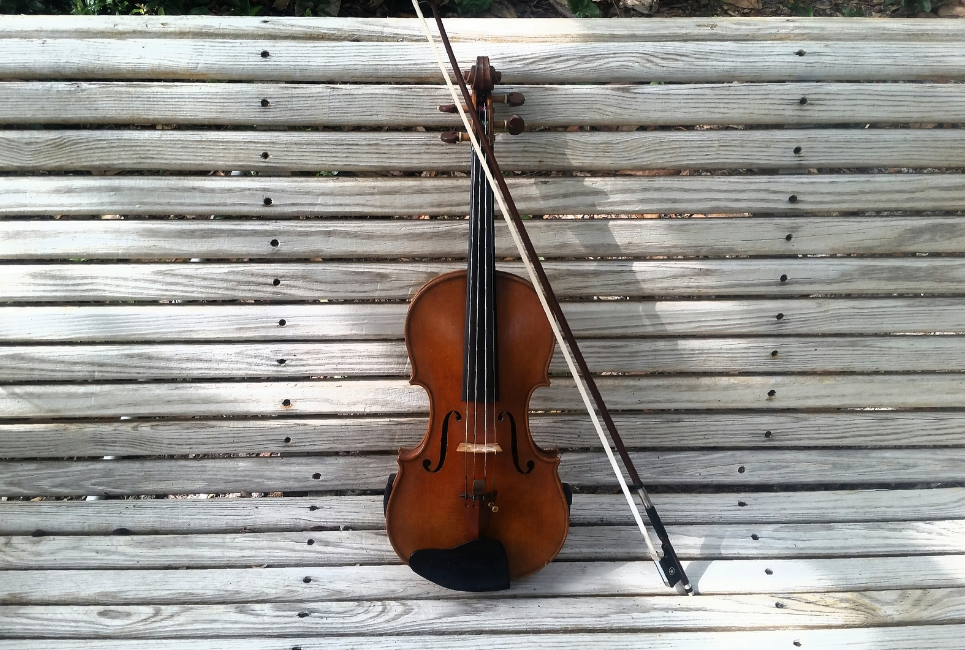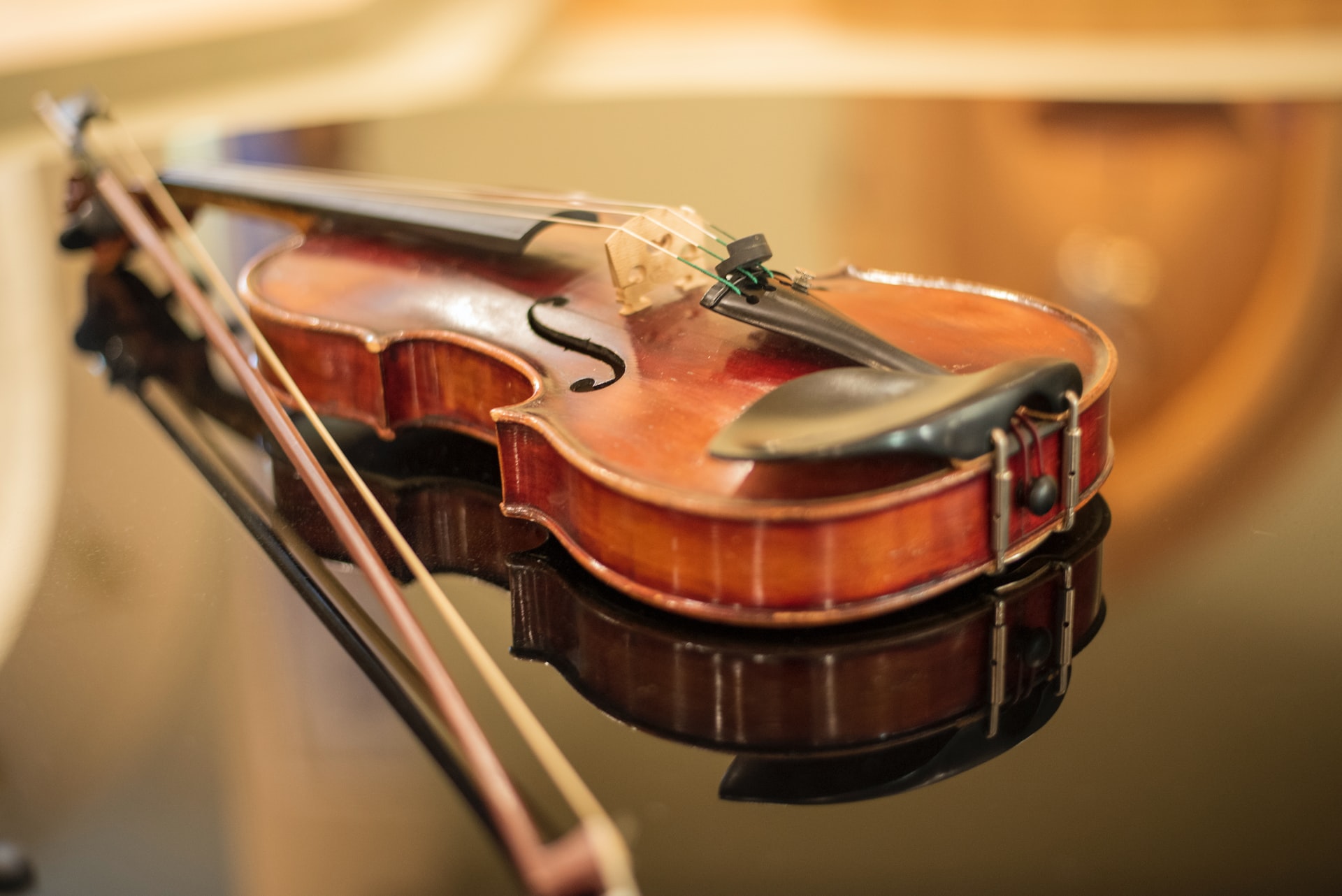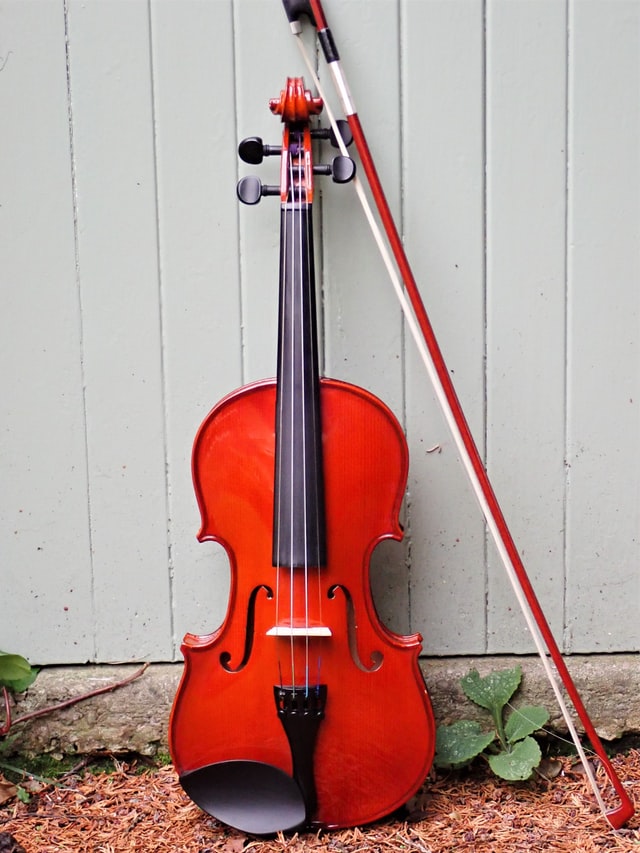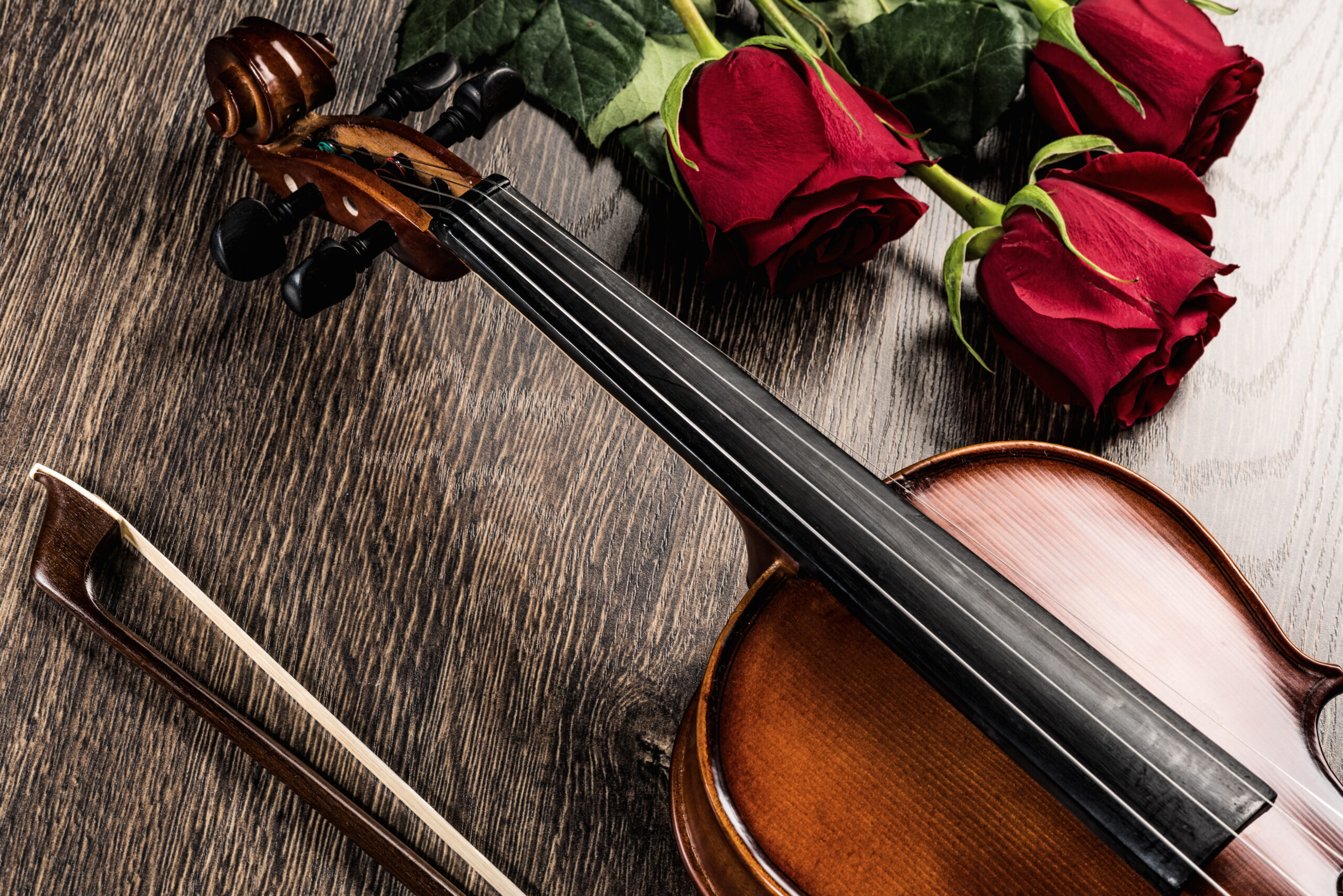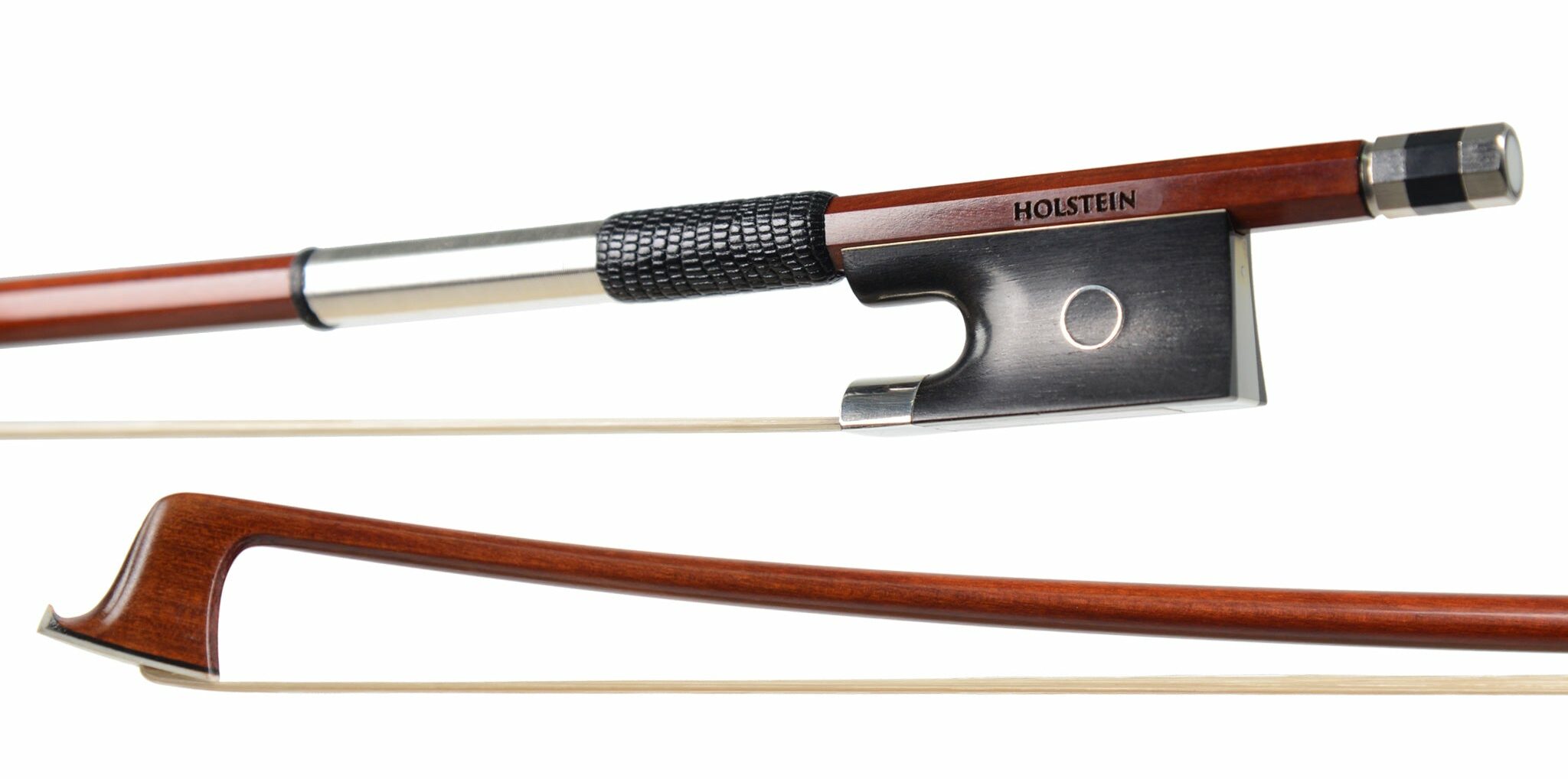- Best Fretted Violins Guide - May 31, 2022
- Best Yamaha Violins Brand Guide - April 13, 2022
- An Honest Mendini MV300 Review - March 31, 2022
It is always important for a craftsman to have the right tools. For violinists, this means having a quality instrument and bow. However, most people don’t consider the bow as important as the violin. This is untrue – in many cases, it could be said that having a good bow is just as important as having a good violin!
Consider playing a speedy passage with spiccato or making the bow bounce off the string in a certain way. You can have the world’s best-sounding violin, but if your bow doesn’t respond to what you want it to do, it wouldn’t matter. Along the path of becoming a better violinist, it becomes more critical to have the right tools to help you.
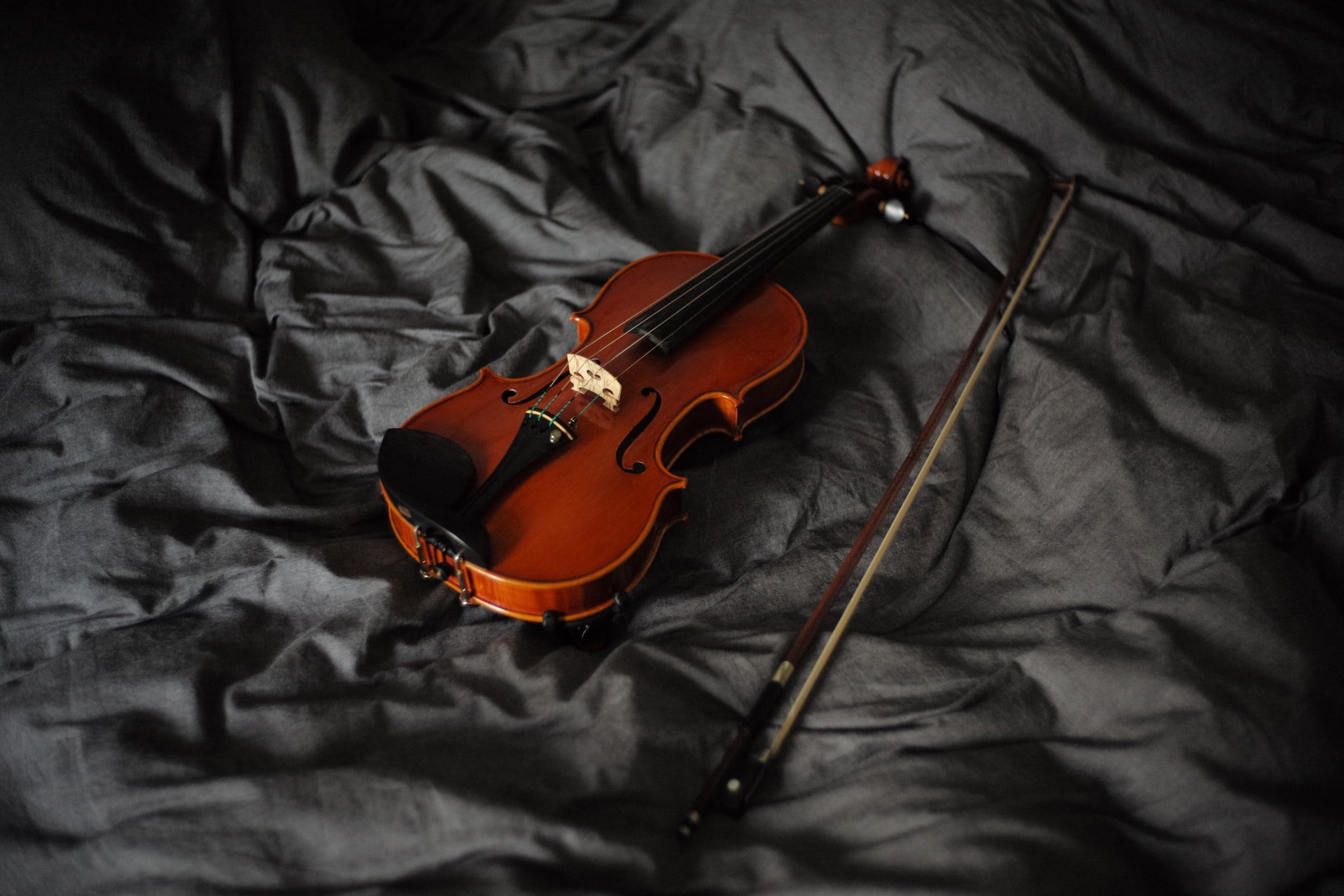
First Steps
It is first essential to know what you are looking for. If you are starting to play the violin for the first time, having a good bow is less critical. When you begin to play, you are working on many different things simultaneously. Like drawing the bow straight, keeping your hand position correctly, using your fingers, and angles/levels/planes of the bow arm.
At this stage, it’s not vitally important you have the world’s best bow, but it still needs to be well balanced and easy to play with. It becomes essential when you start learning different bow strokes, especially ones that are off the string. It is useful, but not imperative, to have a better quality bow to get better results for these. Perhaps the bow you have been using is alright enough – let your teacher be the judge.
For all questions of this nature, you should always ask your teacher for advice, they will be able to let you know what you should do.
After talking with your teacher and getting their recommendation that you need a new bow, it can be overwhelming to find where. If you live in or near a big city, you probably have access to a good quality violin shop. Your teacher will guide you where you should look and give you recommendations.
It’s always good to go to a reputable violin shop instead of a traditional music store that carries all kinds of instruments (unless they have a specific specialty in quality string instruments). The employees at these shops have a more in-depth knowledge of string instruments and are most suited to helping you find the right fit.
If you are an advancing student or professional, you should always try the bow in person – don’t buy it without trying it in your hand first. It’s not a good idea to go online and pick a bow, even if it has good reviews, because what works for someone else may not work for you. If you are buying a mass-produced bow, like a carbon fiber bow, ask around and see if anyone you know has one you can try first.
If you are a new student or have only been playing for a year or two, it’s essential to have a well-balanced and easy-to-control bow. In a perfect world, everyone would audition their new bow. Still, it’s not a priority for many students, as they don’t have the skill or knowledge yet to make use of the nuances. Instead, purchasing a mass-produced bow like a carbon fiber bow or student brazilwood bow with good reviews and from a reputable company like Eastman, Fiddlershop, Glasser, and CodaBow will provide enough quality and durability for learning.
Types of Bows
Bows have traditionally been made of wood, specifically Pernambuco. This is a very special type of wood grown in Brazil. Cheaper bows have been made of brazilwood, a name for many different kinds of wood sourced from Brazil.
However, in more recent years, carbon fiber bows have been created. Carbon fiber bows are made of synthetic material with different properties than wood. Since it is man-made, you can do almost anything you want with it. The material of your bow matters in a few different ways.
Suppose you are looking to play outside, for example. In that case, you shouldn’t take a costly bow (or instrument, for that matter) outside for an extended period of time. The wood of the instrument and bow is almost still alive, and it reacts poorly to various weather conditions. It may be better to get a carbon fiber bow if you are looking to play outside a lot because it will not ruin under bad weather conditions like wood.
However, most professionals agree that there is something that playing with a real wood bow has that a carbon fiber bow cannot replicate. Carbon fiber bows are often reported to have an empty and slightly metallic tone compared to the warmth of a wood bow. The vast majority of professional classical musicians play with wood bows. Contemporary violinists will use high-quality wood and carbon fiber bows; I see carbon fiber paired with electric violins and wood with acoustic violins the most, but it is occasionally switched up. Suppose you are looking to buy your first bow upgrade. In that case, one advantage of having a carbon fiber bow is that it is harder to break than a wood bow, meaning that if you drop it on the floor or leave it in the cold car overnight, it won’t suffer as much damage.
If you have been playing for a few years and are serious about your violin studies, it is probably better to opt for a wood bow. As always, ask your teacher for advice.
Next Steps
Let’s say you decide to make an appointment with the violin shop and go. Now what? Before you go, make sure your strings are new and broken in. Don’t go to the violin shop right after changing your strings because they will need time to settle in. Also, don’t go to the violin shop if your strings are old and played on. Let your violin sound at its best.
Setting a Budget
Before you go, it’s important to have a starting budget. Bows may be more expensive than you think. You shouldn’t feel like you have to buy the most expensive thing; in many cases, price is not determined by how good the bow is.
For example, a bow made by a young luthier may not be worth as much as a bow made in the 1800s, but that doesn’t necessarily mean that it is of lesser quality. And ultimately, the price shouldn’t matter – what matters is how it feels to you. That said, the first thing your violin shop will ask you is what your budget is.
They will have bows ranging in all different price points, and they will need some idea of what to show you.
Consider this an investment. Many people spend hundreds of thousands of dollars on computers, cars, clothes, and other things. Still, they gawk at the idea of spending the same amount on a bow. Consider how professionals of all types invest in their equipment, from athletes to artists.
You don’t need to spend a certain amount of money for a bow to be “good.” You should never feel like a bow you have is not “good” because it is inexpensive or you need to spend a lot of money to make sure that you have the best bow because you won’t be a good violinist without it. Some bad violinists spend thousands of dollars on expensive equipment because they can afford it, but they do not play well.
Good tools make it easier, but they certainly do not guarantee that you will play well. A master violinist can still play a poor quality instrument and bow to its fullest sound – even if it is a poor sound.
Your budget should be something that you realistically can afford. Good bows come at all price points, and even if someone you know spent thousands of dollars on something, it doesn’t mean that you should spend the same, especially if it is a bad financial strain.
Don’t feel like going deep into debt for a bow is worth it – that will do more harm than good in the long run. Your violin shop will have something for everyone, and if they don’t, take your business elsewhere.
Trying the Bows
Once your salesman hears your budget, he will bring some bows to try. Don’t try them all at once! It’s essential to be methodical in your approach. Have your current bow on the table next to all the rest and with every new bow, compare it against your current one. You should have a notebook handy where you can write down the names of the bows you try and take notes about each so you can have them for later. Here are some things to look for:
- Weight
Bows come in all different weights. There is no “set weight” a bow has to be. Is it heavier or lighter than your current bow when you pick up the new bow? Perhaps you like the feeling of a heavier bow. Some people prefer a lighter bow. It is completely unique to you – there is no right answer. Your teacher may give some ideas, but only you know what feels best to you.
- Balance
A good bow feels right in your hand. If a bow is too heavy at the tip of the frog, you may not like that. You should also notice that there’s an inconsistency in the stick when you draw a straight bow. This is where carbon fiber bows are different. There are hardly any inconsistencies because the bow is man-made, and the material didn’t grow from a tree.
- Price
Be mindful of the price. Is it in your budget? Be prepared to go above and below your budget. Remember, it is your money. Do not feel pressured or obligated to spend it in a way that someone tells you. It is your bow, not theirs, and at the end of the day, you have to play on it, and they don’t. If you don’t like it, don’t let anyone pressure you to spend your money on it.
When you start trying bows, don’t just play anything – have a set of music that you want to compare on. You should try the same things on every bow to give it a fair chance, as some bows may sound very good when playing long and on the string, but they won’t work if you want to play off the string, and vice versa.
For example, you may be working on a concerto with a very fast passage, along with an etude your teacher gave you and scales. When you pick up the bow, try these three things first to see how they feel and take notes. Then try these same three things on the next bow.
You may notice that a new bow feels off compared to your current bow, and that doesn’t mean you should move on immediately. Every bow is different, and you are looking to get a new one anyway, so don’t try to buy the same one you already have. But be mindful of changes that do not sit well with your hand. The bow should feel like an extension of your hand, and you shouldn’t feel like you have to argue with it to follow your instructions.
Taking It Home
After you’ve taken notes on some, you may ask your salesman to take a few with you when you leave for in-home trials. This is common practice, but be careful – if anything happens to the bows, it’s your responsibility, and you are financially obligated. The violin salesman will fill out a waiver that you have to sign, listing the bows that you have, their price, and that you are on the hook if anything happens.
Take care of the bows very well, don’t leave them in your car, in the heat or the cold, or where anyone could take them or break them. If your salesman gives you a case, always keep them in the case unless you are using them – don’t leave them on the table or on the floor, or on the chair where someone (or you) could sit on them.
There are a few benefits to taking some bows home with you, especially if you can’t decide between a few or are sold on one but just want to make sure. If you take some with you, take them to your teacher and have them take a look to make sure everything looks OK – your teacher may notice a small flaw that can turn into a big problem later, like the bow being warped.
Another thing you should do is have someone play your violin while you stand a distance away and listen. Have someone play with your current bow and then with the new bow. Write down what you hear and notice. Try playing in different sound environments – see how you sound in a carpeted room versus a room with an echo.
If you decide not to take the bows home, or store policy doesn’t allow this, then bring a friend with you into the store so that you can do this there, or have the salesman play for you, or better yet, have your teacher come. Don’t feel shy to ask this of your teacher – it’s what they’re there for. Just remember to compensate them for their time.
Asking for Advice
When you ask your friends and teacher for advice, or even people who don’t play the violin, everyone will have different opinions. Some people may insist the bow makes you sound too thin, and other people may insist it’s a robust, full sound.
When you ask 10 different people for advice, you might get 10 different conflicting answers. The most important opinion is your own. Rely on your own comfort level first, since you will be the one playing with it.
Make Your Own Decision
To reiterate an important point: don’t let anyone pressure you into buying anything you don’t want. Suppose the salesman hands you a bow and insists strongly that it’s the best one on the market. In that case, all of the professional violinists use it and say if you don’t use it, you’re not going to play well. It is a red flag, and you should either get a new salesman or a new violin shop entirely.
If the salesman is hyping up a bow and you try it and not only hate it, but it’s outside of your price range, but he’s very lovely, don’t feel like you owe him a purchase. If you take a bow home and are almost sold but decide at the end, it’s just not for you, also. Don’t feel that you owe him a purchase. Sometimes salesmen can also try to belittle you and question your expertise and ability so that you will feel pressured into buying something.
This is a business transaction, and you are the one spending your own money. You have the final say, and if your salesman pushes you in a direction you don’t want to go, then push back or leave. 99% of reputable violin shops will have quality salespeople that prioritize your happiness and satisfaction over a sale. Still, you will find someone not as focused on these things on rare occasions. When dealing with expensive high-quality bows, you need to make sure you are only purchasing something you will be happy with.
Always trust your salesman at a reputable store unless they start to give you reasons not to. If you’re a young violinist, it is a good idea to have your parents there as reinforcement.
One more final note: you may purchase the bow and feel very happy, and then a few months later start to question: “Did I pick the right one? It’s not behaving as I wanted it to… I knew I should have picked the other one…”
Every musician goes through this after purchase. Don’t question your original judgment; there will always be a nicer bow or instrument than the one you have. If you made a sound decision, you made the right decision.
Bows Worth Checking Out
Suppose you aren’t an advanced or professional violinist. In that case, you are probably looking for a new bow to replace the one you got with your violin. This is especially true if you bought an inexpensive starter instrument. Cheap brazilwood or carbon fiber bows aren’t worth the cost to rehair them, as it costs more than just purchasing a new bow. If you are playing on a full-sized instrument, you won’t be moving to a bigger size every two years or so; you won’t be replacing your bow with the next size up either. Instead, you will need to replace it when the hair is wearing thin. This can be after six months of diligent practice or two to three years if you only practice a few times a week.
Bows with a higher price tag should be tried in person; you don’t want to spend $500 on a bow that you end up not liking. If you don’t live near a music shop, look online for retailers that will offer an in-home trial and can help you choose a few selections to try out. I kept this list to bows that are sufficient for a student in the early stages of learning. I also aimed to keep these selections as inexpensive as possible while still 0ffering quality choices in various materials. Lastly, I chose bows I personally have used, have tried, or have confidence in their quality and ability to suit a wide variety of students.
Top Pick – Fiddlerman Carbon Fiber Weave
I love all of my bows for different reasons, but the Fiddlerman Carbon Fiber Weave bow is my current favorite. I’m an intermediate student, and while I could certainly go try out a new bow, I’m a hobbyist and not aiming to be a professional. This bow is perfect for me in that regard; it’s capable of handling advancing techniques but doesn’t retain the same warmth as a wood bow. Still, when comparing this bow against my nice brazilwood bow, I preferred it because it was easier to handle and felt more intuitive to my playing style. It’s also roughly the cost of a bow rehair, so it’s easy to replace online; this is great because I live a good distance from a music store. This bow also drew the same power as the more expensive Cadenza bow for about half the cost.
Pros
- Carbon fiber weave stick, incredibly durable
- Siberian horsehair
- Feels and play similarly to my more expensive bow
- Inexpensive and readily available
Cons
- Doesn’t have the same warmth as my brazilwood
Brazilwood – Scherl and Roth Brazilwood Bow
Brazilwood bows are typically the cheapest bows you can get; because of this, there are a lot of cheap bows on the market. Scherl and Roth are well-known violin companies and are currently owned by Conn Selmer; they are one of the world’s biggest orchestral strings retailers and accessories. This is why I’m confident that their brazilwood bow can handle all of a student’s first steps to playing the violin. It’s also a very inexpensive choice and makes a significant upgrade from the cheap bows with violins from Cecilio and Mendini.
Pros
- Inexpensive
- Made with quality materials from a well-respected company
- Easy to replace when hair wears thin or is broken
Cons
- Upgrading to a more durable carbon fiber bow is only a little bit more
Carbon Fiber – Eastman Cadenza One Star
The Eastman Cadenza One Star bow is my second favorite bow. It’s incredibly similar to the Fiddlerman weave bow both in looks and how it sounds; I will say it has a little more power and is slightly easier to hand. However, it’s hardly noticeable, and only after a few backs and forth between bows did I really start to feel the difference. Even then, it was minute; I would still choose the cheaper bow simply to save my pocket a few bucks towards strings that could easily make this up. This is a super quality bow, and it matches their Eastman VL305 violin really well.
Pros
- Quality bow from well-known makers
- Extremely durable and resistant to temperature and humidity changes
- Quality horsehair that stands up to frequent practice
- The leather grip is really good quality and only shows a tiny bit of wear where I put my thumb after five years.
- Worth rehairing if you like it
Cons
- A decent bit more expensive than the Fiddlerman weave bow, which is similar in quality and tone.
Pernambuco – Holstein Pernambuco
Pernambuco is the preferred wood for bows, and they can get very, very expensive. Bows like the Holstein Pernambuco bow are the perfect introductory Pernambuco bow that will give a growing student a feel for what a higher quality wood bow plays like without spending too much money. Additionally, Fiddlershop will test out bows and film them for you to hear how it sounds before you buy. While this isn’t as good as trying out the bow yourself, it does give you some idea of what you are buying. Lastly, they use Siberian horsehair like the carbon fiber weave like the weave bow and upgraded the leather wrap to pretty durable lizard skin.
Pros
- Made from select Pernambuco
- Inexpensive for the quality
- Worth rehairing for several years
- A perfect first Pernambuco wood for an advancing student
- Can hear before you buy
Cons
- The tone is a little empty compared to more expensive bows
A Really Fancy, Try It Before You Buy It Pick! – Arcus S-Series
I’ve heard some amazing things about the Arcus S-Series bow, regardless of what level you purchase. Many have said that this bow outplays their Pernambuco bow of a similar price point. The prices range from just over $1,000 to $8,000, so there’s a bow in here for every advanced to a professional violinist. With the rave reviews pouring in, you know they are of great quality. Still, you know what both you and your instrument need from a bow at this level and should make sure this one passes the test. You may find you still prefer your wood bow because it will still give just a tad more warmth over these carbon fiber bows and potentially for significantly less.
Pros
- Used by many professionals worldwide
- Six different bows to choose from, depending on playing level and budget
- Extremely lightweight and agile
- Available in round or octagonal. The round has a steady feel, while the octagonal is brighter and livelier.
Cons
- Extremely expensive
- Only meant for very advanced players or professionals
FAQ
Answer: You might need a rehair if the bow hair becomes dirty, or when you break enough hairs on the bow. If you rub the hair of the bow with your fingers, the natural oils from your skin will ruin the bow hair. Sometimes near the frog, someone’s bow hair might be brown instead of white, this is why.
When this happens, you should take your bow to your luthier so he can clean or change the hair. It is normal to sometimes break bow hairs, but if you are constantly breaking them every time you play, it means that there is a problem with the way you are drawing the bow, and you should ask your teacher for advice. At any rate, if you end up with too few hairs on your bow, you should get it rehaired or replace it if it is really cheap.
Answer: There is no right answer to what makes a good bow. A bow that works for your friend or teacher may not work for you. You should try different bows with different characteristics and see what you like. This is why taking notes on what you try is so important because then you can know what your preferences are.
Answer: Bow makers first begin by choosing their wood. Then, they use tools to shape the bow in the way they want it – for example, the stick is thinner at the tip than it is at the frog and they have to decide the exact measurements and gradations that they want, and then execute them.
The bow is planed and curved through a process of heating the wood and then shaping it. The frog is created and attached, and then the hair. This is a big simplification of a multi-step process that can take weeks to complete.
Answer: Unbleached horsehair is important because bleaching the horsehair weakens and damages it. However, this isn’t something you should worry about – picking the horsehair is done by your luthier, as he will have better quality material available to him.
Final Thoughts
Hopefully, this guide helped you on your journey to finding a new bow! As a closing note, remember that just because a bow works for 100 people, it doesn’t mean that it has to work for you too, everyone is different. Finally, congratulate yourself! With new equipment, you will proceed further on your journey of violin playing and satisfaction.
With your new bow, you might want to learn more about it, so take a look at Violin Bow Parts Explained:
Looking for more interesting readings? Check out:

